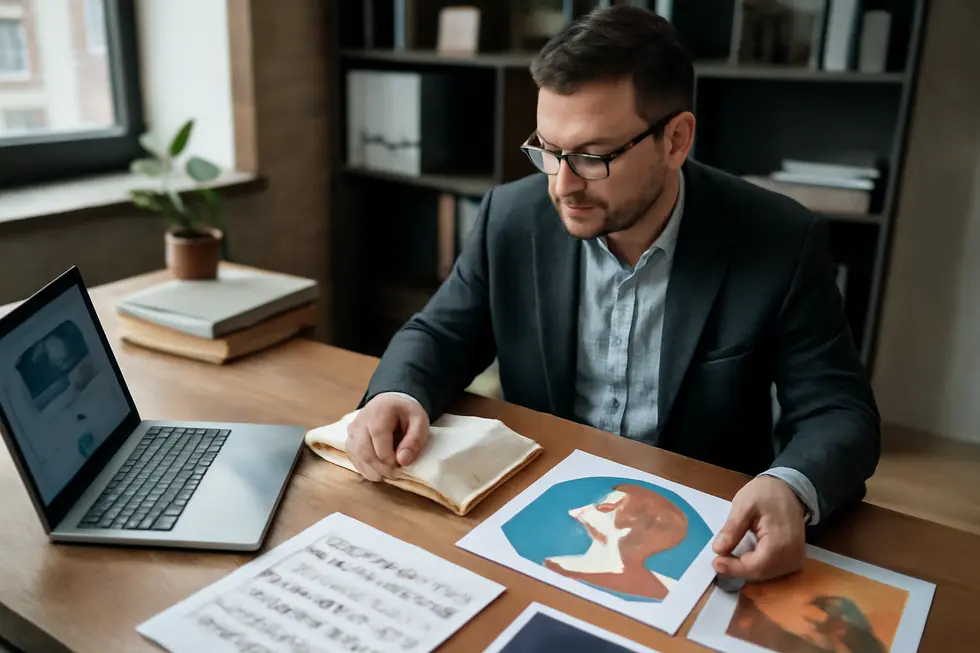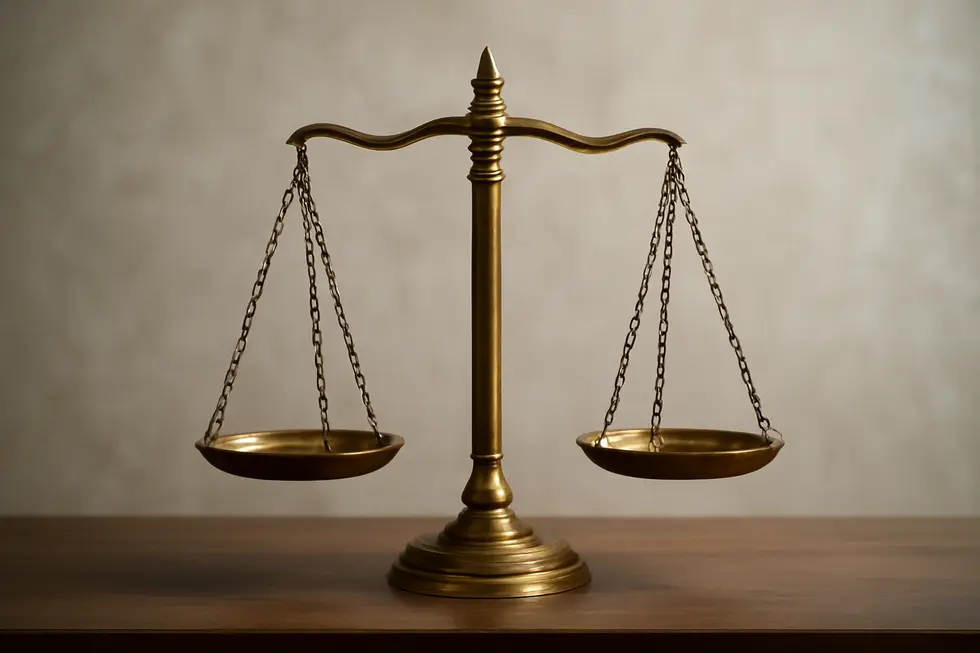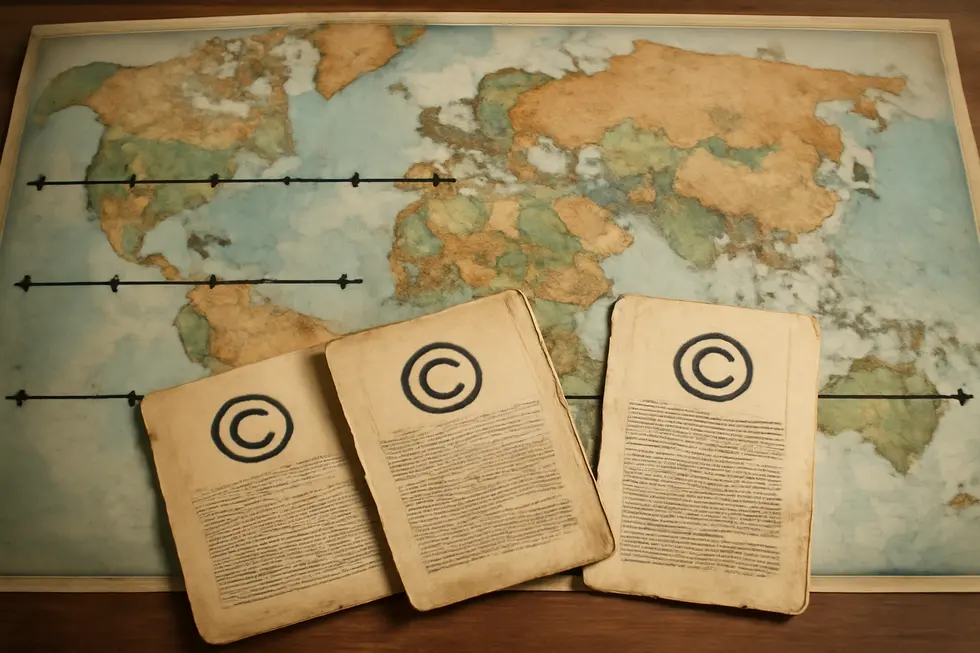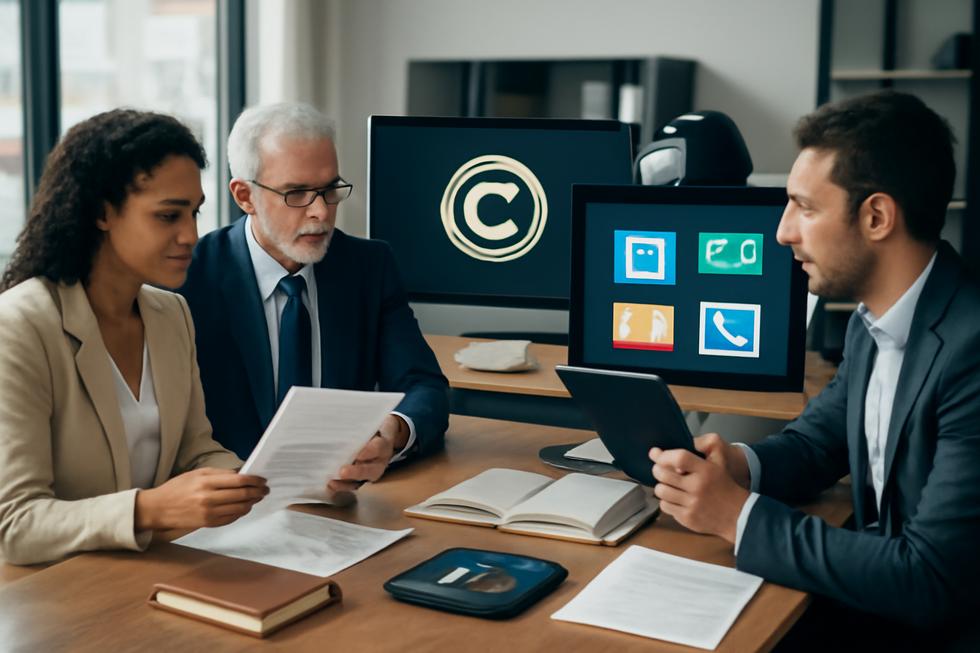Introduction
For business owners, understanding copyright is vital to protect the creative assets that fuel growth and innovation. Copyright Def, or copyright definition, outlines the legal rights granted to creators over original works fixed in tangible forms such as writings, music, software, and artistic expressions. Knowing these principles helps businesses safeguard their proprietary content against unauthorized use and leverage their intellectual property effectively. This article breaks down the core concepts of copyright: its fundamental principles and scope, the exclusive rights it grants along with important limitations, the duration and legal framework governing these rights globally, and finally, the economic and creative incentives copyright provides for fostering innovation. Together, these chapters offer business owners a comprehensive understanding of copyright Def to enhance legal protection and strategic advantage.
Tables of Contents
Chapter 1: Fundamental Principles of Copyright Def: Definitions and Scope of Protection
- Unpacking Copyright’s Core: Originality and Exclusive Rights at the Heart of Protection
- Navigating Copyright’s Reach: Defining Protected Expressions and Subject Matter Boundaries
- Balancing Creator Rights and Public Access: Understanding Copyright Duration, Limitations, and Territorial Nuances
Chapter 2: Rights and Limitations under Copyright Def: Exclusive Controls and Fair Use Exceptions
- Harnessing Exclusive Rights: How Copyright Creates Control and Protection Amidst Its Limitations
- Balancing Creator Rights and Public Access: The Fair Use Doctrine’s Role in Copyright Limitations
- Navigating Statutory Exceptions: How Fair Use Shapes the Boundaries of Copyright Authority
Chapter 3: Duration and Legal Framework of Copyright Def: Time Limits and Global Conventions
- Harmonizing Copyright Duration: The Berne Convention’s Role in Shaping International Standards
- Navigating National Copyright Durations: Diverse Timeframes within the Global Legal Framework
- Balancing Protection and Access: Philosophical Debates and Legal Exceptions in Copyright Duration
Chapter 4: Economic and Creative Incentives in Copyright Def: Purpose and Impact on Innovation
- How Copyright’s Economic Incentives Drive Investment and Shape Market Innovation
- Fueling Cultural Growth and Knowledge Exchange through Creative Copyright Incentives
- Harmonizing Creator Rights and Public Use: The Engine Driving Innovation and Societal Progress in Copyright Def
Chapter 1: Fundamental Principles of Copyright Def: Definitions and Scope of Protection

1. Unpacking Copyright’s Core: Originality and Exclusive Rights at the Heart of Protection
Copyright protection hinges on the combination of originality and exclusive rights, forming the backbone of what the law safeguards. At its essence, copyright law grants creators exclusive control over their original works once those works are fixed in a tangible medium. This fixation, whether in writing, sound recording, or digital code, triggers immediate protection without formal registration. The crux is that the work must possess originality, meaning it must be independently created and demonstrate at least a minimal degree of creativity beyond a mere recital of facts or data.
This originality threshold, though modest, excludes protection for raw facts, ideas, or methods themselves. Instead, copyright shields the unique expression of those ideas—how facts are selected, arranged, or presented creatively. For example, a simple phone directory’s white pages are not protected due to their lack of creativity, but a curated collection of literary essays or an original software program is covered because of the creative choices involved.
Within this protective framework, copyright confers a bundle of exclusive rights upon the author or copyright holder. These rights empower them to control reproduction, distribution, public performance, and adaptation of their work. By centralizing control, these rights enable creators to prevent unauthorized exploitation, thus encouraging the production and dissemination of original works.
However, these rights are not indefinite. Protection lasts for a limited period—typically the life of the author plus seventy years in many jurisdictions—after which the work enters the public domain for unrestricted use. This temporal scope balances the interests of creators with societal access, ensuring creativity is incentivized while knowledge and culture eventually become freely available.
Overall, copyright’s definition aspect intertwines the originality requirement and exclusive rights to create a legal shield for original expressions fixed in tangible forms. This framework encourages innovation while respecting the line between protecting expression and allowing free use of ideas and information.
For deeper insight into how copyright interacts with business and brand considerations, see this detailed resource on copyright company name protection.
(Content aligned with legal principles discussed in sources like the Bytescare article on the nature and scope of copyright.)
2. Navigating Copyright’s Reach: Defining Protected Expressions and Subject Matter Boundaries
Copyright protection is centered on the unique expression of ideas rather than the ideas themselves. This distinction is crucial: while ideas, facts, and concepts remain free for public use, it is the original articulation or concrete form in which those ideas are presented that copyright law safeguards. To qualify, a work must be original, meaning it shows at least a minimal degree of creativity, and it must be fixed in a tangible medium. This fixation criterion ensures that mere thoughts or spontaneous expressions lacking permanence do not receive copyright protection.
The breadth of subject matter covered by copyright is wide-ranging, encompassing literary works like books and articles, artistic pieces such as paintings and sculptures, musical compositions and their recordings, audiovisual materials including films, as well as computer programs, choreography, and architectural plans. Each category reflects different modes of creative expression, but all share the requirement of originality and fixation. However, not all content qualifies; for example, short phrases, common sayings, or titles usually lack sufficient originality and therefore remain outside copyright’s ambit.
Protection extends to derivative works—those adaptations or transformations of an original work, such as film adaptations of novels or dramatizations. Creating or commercially exploiting derivative works without the copyright owner’s authorization constitutes infringement. This ensures that original creators retain control over downstream uses of their expressions.
By focusing protection on the expression, not on the underlying idea, copyright law strikes a balance that fosters creative innovation while maintaining public access to knowledge and concepts. This core principle prevents monopolization of information while rewarding authors for their creative effort and investment.
For a deeper exploration of how these principles apply in practice, including notable cases clarifying copyright’s scope, see analysis such as the one provided by Bytescare and the referenced case of Akuate Internet Services Pvt Ltd vs. Star India Pvt Ltd (2013).
Further guidance on safeguarding creative expressions and understanding copyright’s role in protecting original works can be found in detail at copyright company name protection.
3. Balancing Creator Rights and Public Access: Understanding Copyright Duration, Limitations, and Territorial Nuances
Balancing Duration and Limitations in Copyright Protection
Copyright strikes a careful balance between granting creators exclusive rights and ensuring public access to cultural and intellectual works over time. Central to this balance is the limited duration of copyright protection, which typically extends through the life of the author plus 70 years in the United States and many other jurisdictions. This extended term ensures that creators and their heirs benefit economically from original works, while eventually allowing those works to enter the public domain for unrestricted use. For anonymous, pseudonymous, or works made for hire, the term is usually defined as either 95 years from publication or 120 years from creation, whichever is shorter. These time frames reflect a compromise between incentivizing creativity and fostering broader societal benefit.
Alongside duration, copyright law carefully delineates its scope with critical limitations. Protection is afforded solely to the expression of ideas fixed in a tangible medium, not to the underlying ideas themselves. This distinction prevents monopolization of concepts and encourages ongoing innovation. Additionally, the law excludes common elements integral to a genre—the scènes à faire doctrine—and expressions for which there are very few alternatives, invoking the merger doctrine. These boundaries prevent overreach and help maintain creative freedom.
Fair use further tempers exclusivity by permitting unlicensed use in limited contexts such as education, commentary, criticism, and news reporting. This principle ensures copyright does not stifle free speech and knowledge dissemination. Moreover, copyright protection is inherently territorial; while international treaties like the Berne Convention harmonize fundamental standards, specific rules can vary by country. This territoriality influences rights enforcement and must be considered when using or licensing works globally.
Licenses often incorporate their own time-bound limitations, allowing copyright holders to reclaim rights for future exploitation. This framework ultimately ensures that copyright works as a dynamic system—supporting creators’ economic interests while enabling eventual public domain access and accommodating lawful exceptions.
For a deeper understanding of how copyright interfaces with business protections, exploring copyright business name protection offers useful insights.
More on these foundational principles can be found in the Title 17 U.S. Code which codifies the statutory framework governing these rights.
Chapter 2: Rights and Limitations under Copyright Def: Exclusive Controls and Fair Use Exceptions

1. Harnessing Exclusive Rights: How Copyright Creates Control and Protection Amidst Its Limitations
Copyright grants creators a powerful bundle of exclusive rights designed to control and protect their original works. These rights empower copyright holders with the sole authority to reproduce, distribute, adapt, publicly perform, and display their creations. This exclusive control creates a temporary monopoly, enabling creators to manage the use and exploitation of their works without interference from unauthorized parties.
The scope of these rights allows for strategic licensing and transfer arrangements. For instance, a copyright owner may issue an exclusive license to a single entity, permitting specific uses of the work while still retaining other rights. Alternatively, full ownership can be transferred, passing all rights to another party. These mechanisms foster flexibility in commercialization and collaboration, further incentivizing creativity by enabling economic benefits.
However, copyright law balances these exclusive privileges with important limitations and exceptions to serve public interests. The fair use doctrine permits unlicensed use of copyrighted works for purposes like criticism, commentary, news reporting, teaching, scholarship, and research. Similarly, personal use exceptions allow individuals limited copying strictly for private, non-commercial purposes. Educational contexts often benefit from narrowly defined allowances for reuse, while provisions exist for backup copies of software to ensure data protection.
Furthermore, copyright protection is inherently time-limited—lasting generally for the author’s life plus 70 years in the U.S.—after which works enter the public domain and become freely accessible. These restrictions ensure that copyright does not unduly hinder access to knowledge and culture.
In essence, exclusive rights provide creators with essential control and protection, enabling them to authorize or restrict use while balancing public interest through fair use exceptions and temporal limitations. This equilibrium encourages ongoing creativity, innovation, and cultural enrichment. For a detailed exploration of licensing and ownership transfer, see exclusive licenses and copyright transfers.
Additional legal context and the balance between copyright protection and public interest are discussed in Title 17 of the U.S. Code, which outlines these rights and exceptions in detail.[3]
2. Balancing Creator Rights and Public Access: The Fair Use Doctrine’s Role in Copyright Limitations
The Fair Use Doctrine is a crucial safeguard within copyright law, serving as a key limitation on creators’ exclusive rights. While copyright grants authors and artists control over reproduction, adaptation, and distribution of their original works, fair use preserves space for socially valuable activities such as criticism, commentary, scholarship, research, teaching, and news reporting. This doctrine recognizes that absolute exclusivity could hinder free expression and innovation, so it acts as a flexible legal exception allowing limited use of protected content without authorization under certain conditions.
In the United States, fair use is guided by a nuanced four-factor test. First, courts consider the purpose and character of the use, particularly noting if it is for commercial gain or educational benefit and whether the new use is transformative—meaning it adds new expression or meaning rather than merely copying. Second, the nature of the copyrighted work is examined, with more latitude often given to uses involving factual rather than highly creative works. Third, the amount and substantiality of the portion used relative to the entire work is assessed, guarding against excessive extraction of key elements. Finally, the effect of the use on the original work’s market is weighed; uses that significantly harm the potential or actual market value are less likely to qualify as fair use.
Together, these factors balance owners’ incentive to create with society’s interest in accessing and building upon existing knowledge and culture. The doctrine’s case-by-case application allows courts to adapt fairness to evolving technologies and social contexts, preventing rigid enforcement from stifling legitimate expression. In this way, fair use plays an indispensable role in fostering creative growth, academic freedom, and critical discourse, all while respecting creators’ rights.
By permitting unlicensed use in defined contexts, fair use keeps copyright law from becoming an overreaching monopoly. It sustains a legal equilibrium between protecting original expression and encouraging wider dissemination of information. This relationship exemplifies copyright’s foundational goal: to incentivize creativity without impeding the cultural and intellectual enrichment of the public. For a comprehensive overview of the doctrine’s history and legal standards, see Britannica’s detailed article on Fair Use.
3. Navigating Statutory Exceptions: How Fair Use Shapes the Boundaries of Copyright Authority
Navigating Statutory Exceptions: How Fair Use Shapes the Boundaries of Copyright Authority
Copyright grants creators exclusive control over their original works, including rights to reproduce, distribute, and publicly display or perform these creations. Yet, these exclusive rights are carefully moderated by statutory exceptions designed to harmonize the protections afforded to copyright holders with broader societal needs. Among these, the doctrine of fair use stands as the principal mechanism allowing limited, unlicensed uses of copyrighted material for socially valuable purposes.
Fair use recognizes that rigid enforcement of copyright can suppress important activities such as criticism, commentary, scholarship, teaching, and news reporting. This legal provision permits such uses when they serve transformative or educational aims rather than purely commercial exploitation. Four key factors guide courts in evaluating whether a use is fair: the purpose and character of the use, the nature of the copyrighted work, the quantity and significance of the portion used, and the effect on the work’s potential market. No single factor alone determines the outcome; instead, these elements are weighed holistically to ensure fair use promotes creativity and knowledge without unfairly undermining original works.
Beyond fair use, specific exceptions also exist to support libraries, archives, and educational institutions—for example, allowing copying for preservation or interlibrary lending—acknowledging their role in facilitating access to cultural resources. Digital rights management and licensing frameworks further nuance the balance, ensuring that access is granted responsibly without eroding creator control.
Through these statutory exceptions, copyright law does not merely safeguard creators’ commercial interests; it also protects the public’s interest in fostering creativity, innovation, and the free flow of information. This delicate interplay ensures copyright remains a dynamic tool, incentivizing original expression while enabling essential activities like teaching, research, and commentary.
For a deeper exploration of how copyright rights intersect with business protection strategies, consider reviewing copyright protection considerations for brand names.
For authoritative text on fair use, see Section 107 of the U.S. Copyright Act: https://www.law.cornell.edu/uscode/text/17/107
Chapter 3: Duration and Legal Framework of Copyright Def: Time Limits and Global Conventions

1. Harmonizing Copyright Duration: The Berne Convention’s Role in Shaping International Standards
The Berne Convention for the Protection of Literary and Artistic Works stands as the cornerstone of international copyright law, establishing a harmonized baseline for the duration and protection of creative works. At its core, the Convention mandates a minimum copyright term of the life of the author plus 50 years, ensuring that creators receive protection for a significant period after their lifetime. This term serves as a floor rather than a ceiling, as many member countries—including the United States and the European Union—extend protection to life plus 70 years, reflecting evolving norms and economic considerations.
One of the Convention’s defining features is the principle of automatic protection. Unlike older registration-based systems, protection under the Berne Convention attaches the moment a work is created and fixed in tangible form, without the need for formal registration or compliance with administrative formalities. This guarantees seamless, cross-border protection among the Convention’s member states and embodies the principle of “national treatment,” which requires countries to offer foreign works the same rights granted to their own nationals.
Despite this cohesive framework, implementation in individual member countries varies. For example, the United States employs complex rules based on the date of publication or creation. Works published before 1930 are mostly in the public domain, while those published after 1978 generally enjoy protection for the life of the author plus 70 years. Additionally, anonymous works and works made for hire receive fixed maximum terms of 95 or 120 years, whichever is shorter. In contrast, the European Union follows a uniform life-plus-70-years term for most works, reflecting its commitment to higher standards than the Berne minimum.
Special domestic regulations occasionally introduce unique exceptions, such as perpetual copyrights on certain unpublished or government works in rare circumstances. These cases highlight that while the Berne Convention offers a fundamental framework, the precise contours of copyright duration depend on national legislation.
The Convention’s international standardization facilitates creators’ rights recognition worldwide and encourages creative investment by ensuring legal consistency. For creators or businesses seeking deeper understanding of these timelines within the U.S. context, resources like the U.S. Copyright Office offer detailed insights. For comprehensive analysis of international treaties and copyright enforcement, see: https://patentpc.com/blog/the-role-of-international-treaties-in-cross-border-ip-enforcement
2. Navigating National Copyright Durations: Diverse Timeframes within the Global Legal Framework
Copyright duration fundamentally balances the creator’s rights with eventual public access. Globally, the protection period typically spans from the author’s lifetime plus an additional 50 to 70 years, yet national laws introduce notable variations and nuances. For instance, within the United Kingdom, copyright generally endures for 70 years after the author’s death for literary, dramatic, musical, and artistic works. This uniform term ensures consistent protection, though unpublished works created before 1988 once enjoyed perpetual protection; these now follow transitional provisions, with most extended protections ending by 2039.
In the United States, the framework differentiates between types of works and their creation dates. Works created after January 1, 1978, commonly benefit from copyright lasting 70 years post-mortem. However, distinct terms govern “works made for hire” or anonymous creations—offering protection for 95 years from publication or 120 years from creation, whichever expires first. Additionally, sound recordings fixed before February 15, 1972, present a unique case, safeguarded under the Music Modernization Act for extended terms ranging between 100 and 110 years after publication, depending on specific dates.
Certain legal complexities arise with orphan works—those whose rights holders cannot be located. Some jurisdictions, such as the UK, have introduced licensing schemes to address usage, allowing temporary rights for these works under regulated conditions and fees. These mechanisms aim to strike a balance between protecting creators’ interests and preventing works from becoming unusable due to untraceable ownership.
Beyond these differences, a core principle remains pervasive: copyright rights are automatic once an original work is fixed in a tangible medium and are time-limited to ultimately bring the work into the public domain. This fosters a dynamic ecosystem where creators are incentivized, yet cultural and educational enrichment flourish when protections lapse. For readers seeking detailed guidance on UK-specific terms and rules, the UK Intellectual Property Office guide remains an authoritative resource.
Understanding these national variations within the overarching international conventions harmonizes copyright’s temporal aspect, ensuring creators receive adequate protection while societal access gradually expands.
3. Balancing Protection and Access: Philosophical Debates and Legal Exceptions in Copyright Duration
Balancing Protection and Access: Philosophical Debates and Legal Exceptions in Copyright Duration
Copyright law sets firm time limits on protection, commonly lasting the author’s life plus 50 to 70 years depending on jurisdiction. This temporal boundary reflects a deliberate policy decision: to incentivize creators by granting exclusive rights temporarily, then enable public access once terms expire. For example, in the UK and much of the world, protection ends 70 years after the author’s death, at which point works enter the public domain for free use. Historically, some jurisdictions allowed perpetual copyright, but modern frameworks phased this out to encourage cultural enrichment through accessible knowledge.
Legally, copyright grants creators exclusive rights on creation without formal registration. These rights include reproduction, adaptation, distribution, and public performance. Yet they are always balanced by exceptions such as fair use or fair dealing—allowing limited unlicensed usage for commentary, parody, criticism, or education. These defenses illustrate copyright’s flexibility in adapting to societal needs and free expression, preventing overreach that might stifle innovation.
Philosophical debates have long shaped these legal contours. Advocates for perpetual copyright liken intellectual property to physical property, arguing that creators’ descendants deserve indefinite control and economic benefits—as Mark Twain famously supported. However, critics emphasize that infinite monopolies hinder cultural development, restricting access that fuels creativity and knowledge sharing. This tension between private ownership and public interest continues to animate copyright discourse globally.
Furthermore, special exceptions like orphan works schemes address practical problems when copyright holders cannot be identified or located, enabling responsible use while respecting rights. Landmark court decisions, such as Warhol v. Goldsmith, highlight judicial interpretations balancing transformative use and original rights under fair use principles.
Together, these debates and exceptions shape a dynamic legal framework that aims to reward creativity while ultimately enriching public culture. This balance underscores the intricate role copyright plays in fostering innovation and access within a complex global landscape.
For more on legal nuances and rights management, see copyright brand name protection.
For deeper insight, consult the comprehensive guide at Filmmakers Academy on Fair Use.
Chapter 4: Economic and Creative Incentives in Copyright Def: Purpose and Impact on Innovation

1. How Copyright’s Economic Incentives Drive Investment and Shape Market Innovation
Copyright law’s economic incentives play a critical role in fostering innovation by granting creators exclusive rights to their original works. These rights create a temporary legal monopoly, allowing authors, artists, and developers to control reproduction, distribution, adaptation, and public performance of their creations. This exclusivity serves as a financial reward, motivating creators to invest time, talent, and resources into producing new cultural, technological, or artistic content.
The ability to monetize creative efforts through licensing or sales encourages ongoing innovation across diverse industries. For instance, software developers rely on copyright protection to safeguard their code from unauthorized copying, ensuring revenue streams that fund further research and development. By granting economic returns, copyright law helps creators recoup initial investments, making sustained innovation financially feasible.
Importantly, these incentives balance individual rights with public interest. By protecting only the original expression—not ideas or facts—the law encourages creators to disclose their works publicly while preserving a vibrant public domain. This disclosure enriches the cultural landscape and spurs additional creativity by enabling others to build upon existing works once protections expire.
Market dynamics under copyright are shaped by exclusivity and transferability. Creators who retain ownership maintain control over derivative works, preserving brand reputation and competitive positioning. Alternatively, strategic licensing can empower third parties to innovate further, though it must be managed carefully to avoid market disruption. This equilibrium between exclusivity and collaborative innovation drives both competition and cultural advancement.
In summary, copyright’s economic incentives not only reward originality but also underpin an ecosystem where innovation and investment thrive in harmony with accessible knowledge. By securing creators’ financial interests while encouraging public dissemination, copyright law sustains a dynamic balance essential for cultural and technological progress.
For more insight on related intellectual property considerations in business, see copyright company name protection.
(Source: U.S. Copyright Office, Title 17 U.S. Code, Berne Convention Agreement)
2. Fueling Cultural Growth and Knowledge Exchange through Creative Copyright Incentives
Copyright law operates as a powerful catalyst for cultural growth and knowledge exchange by offering creators exclusive legal rights that translate into tangible economic and moral incentives. These rights—ranging from reproduction and distribution to public performance and adaptation—afford creators control over how their original works are used, enabling them to derive financial value from their creativity. This temporary monopoly is essential in encouraging continued investment in cultural and intellectual efforts, reducing risks associated with unauthorized exploitation.
By protecting the expression of ideas rather than the ideas themselves, copyright carefully maintains a balance that promotes both innovation and the free flow of knowledge. Creators are rewarded not only with economic benefits but also with recognition that fuels their motivation to innovate and contribute to society’s cultural wealth. Through licensing or transferring rights, copyright holders facilitate the broader dissemination of works, which in turn enriches public access and ensures ongoing cultural development.
This dynamic contributes decisively to expanding creative industries, strengthening cultural heritage, and stimulating the production of diverse new works. Moreover, copyright law’s design includes safeguards like fair use and the public domain to prevent innovation from being stifled, allowing others to build upon existing creations freely. Such provisions are crucial for accumulating collective knowledge and fostering an evolving cultural landscape.
Importantly, copyright’s creative incentives extend beyond established creators to empower marginalized communities by protecting their traditional knowledge and expressions. When combined with digital platforms and strategic intellectual property use, copyright can become an instrument for economic inclusion and knowledge preservation.
Understanding how copyright interlinks economic benefits with cultural and intellectual development highlights its dual role as both a protective shield and an engine of innovation. For an in-depth analysis of copyright’s balance between exclusive rights and public good, refer to comprehensive legal-economic studies on the subject and resources such as the University of Pretoria’s guidance on fostering creativity and rights protection.
Explore further insights into how copyright nurtures creative expression and cultural exchange at copyright brand name logo protection.
3. Harmonizing Creator Rights and Public Use: The Engine Driving Innovation and Societal Progress in Copyright Def
Copyright law carefully calibrates a balance between granting creators exclusive rights and ensuring public access, fostering innovation and lasting progress. By providing authors, artists, and developers with temporary, enforceable control over the reproduction, distribution, adaptation, and public performance of their original works fixed in tangible forms, copyright incentivizes investment in creative endeavors. These exclusive rights act as a limited monopoly, empowering creators to monetize and protect their unique expressions, thus fueling further inventions and cultural enrichment.
Yet, this exclusivity is not unbounded. The law incorporates vital exceptions and limitations—such as fair use—that permit the public to utilize copyrighted materials without authorization for purposes like education, criticism, research, and news reporting. Such allowances prevent the monopolization of knowledge and ideas, maintaining a dynamic environment where creativity thrives alongside free access to information. This duality enables both the protection of economic and moral interests of creators and the preservation of the public’s ability to engage with and build upon existing works.
A fundamental distinction under copyright law separates protectable creative expression from unprotectable facts and raw data. While facts themselves remain in the public domain, unique arrangements or presentations of those facts can be safeguarded, incentivizing innovative compilations and technological advancements without restricting fundamental information flow. This nuance is especially critical in the digital era, where extensive data processing and novel presentations drive new forms of innovation and societal benefit.
Through this thoughtful equilibrium, copyright sustains an ecosystem where creators receive deserved recognition and economic reward, while society continues to benefit from knowledge dissemination and technological progress. This delicate balance is key to understanding copyright’s role not merely as a legal mechanism but as a catalyst for cultural and technological evolution.
For further insight into how these principles support innovation and economic incentives within copyright law, see the detailed explanation at Trademark2Go on copyright’s legal foundations and economic incentives.
Final thoughts
Copyright Def forms the backbone of legal protection for creative works that businesses rely on to innovate, compete, and grow. Understanding the fundamental principles of what copyright protects, the exclusive rights it grants, the fair use exceptions that balance public interest, and the limited duration shaped by international frameworks empowers business owners to strategically safeguard and maximize their intellectual property. Beyond protection, copyright stimulates economic incentives that fuel creativity and inspire innovation essential to long-term business success. Embracing these insights enables businesses to navigate the complex IP landscape confidently, avoiding infringement risks and unlocking the full value of their creative assets.
Your IP is the foundation of your success – let’s protect it together before it’s too late. We can’t wait to help you turn your ideas into legally secured assets.
About us
undefined


